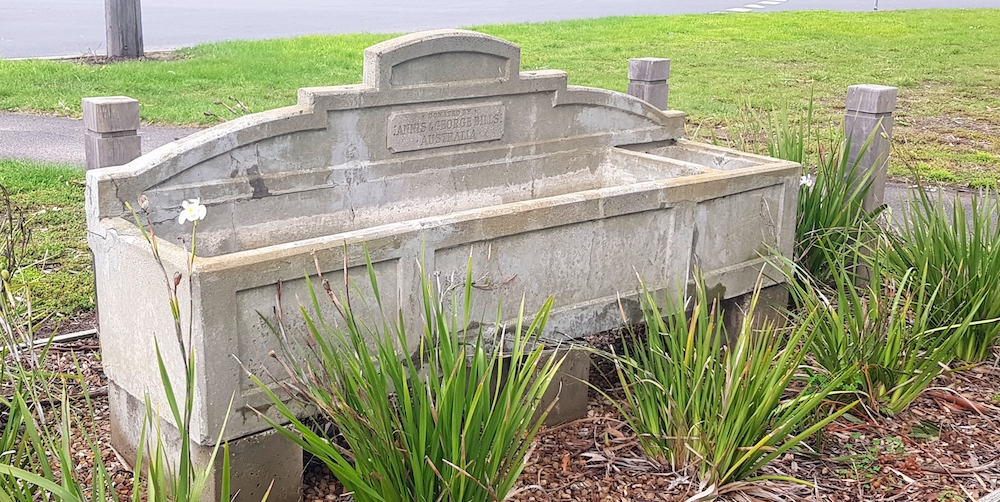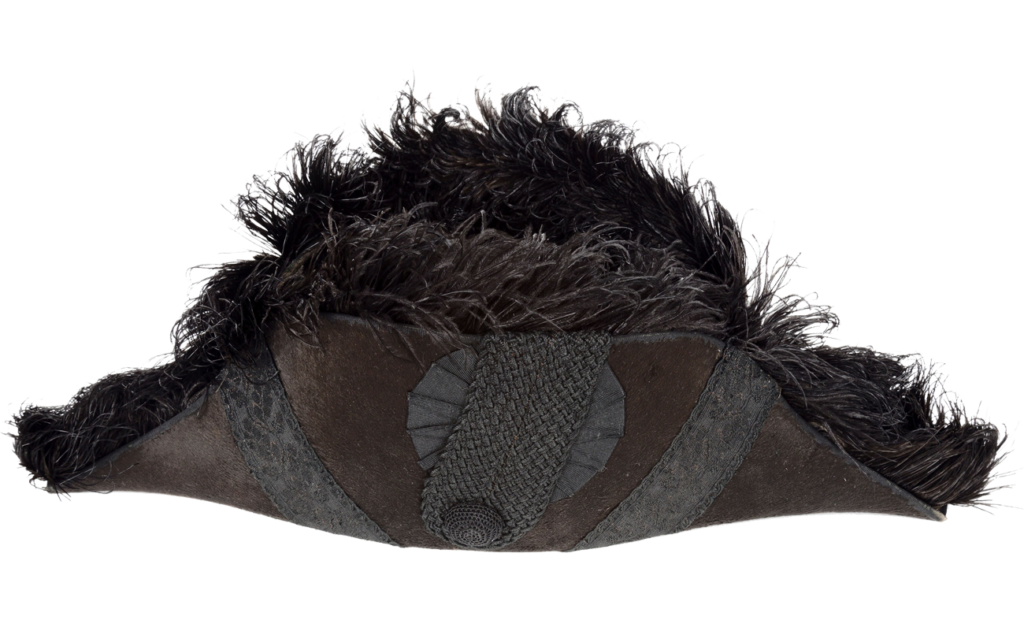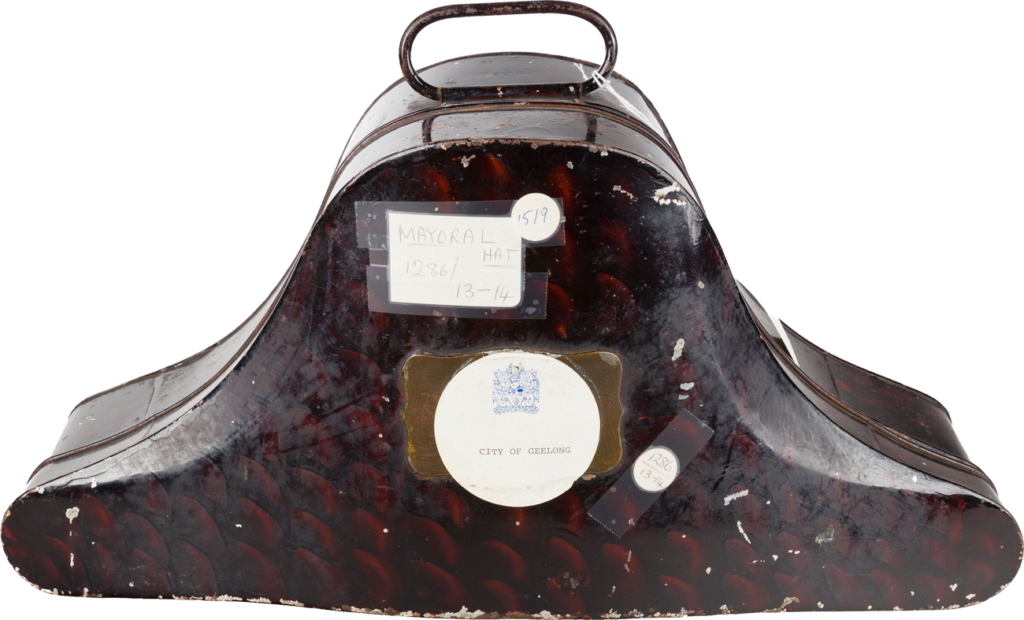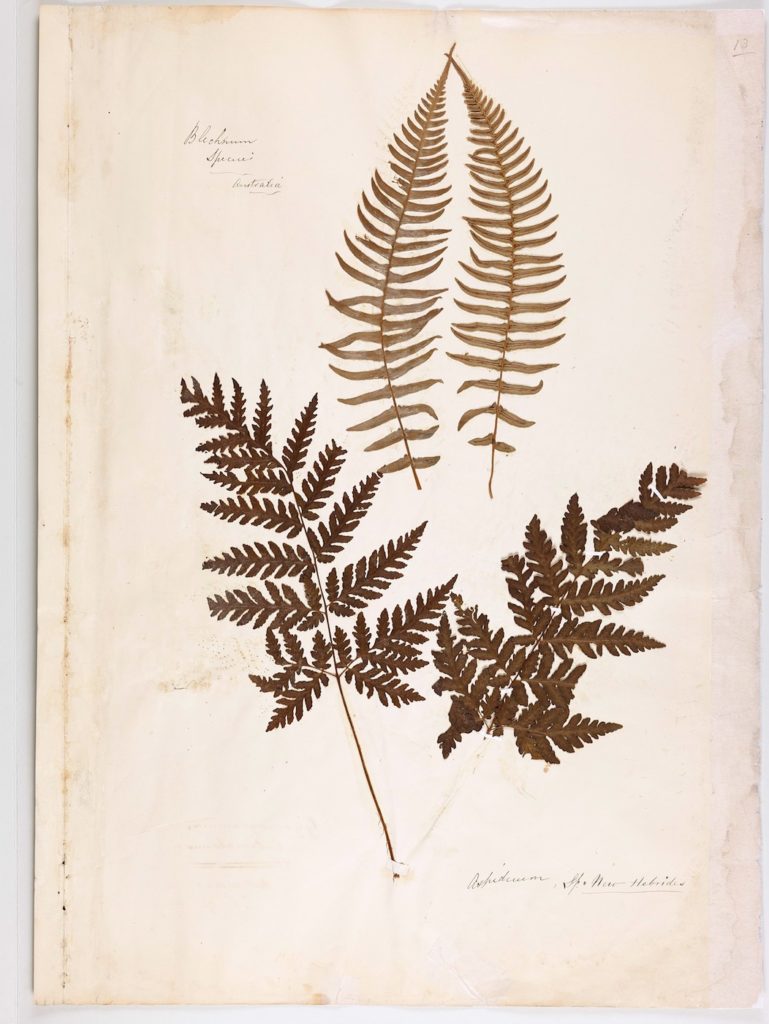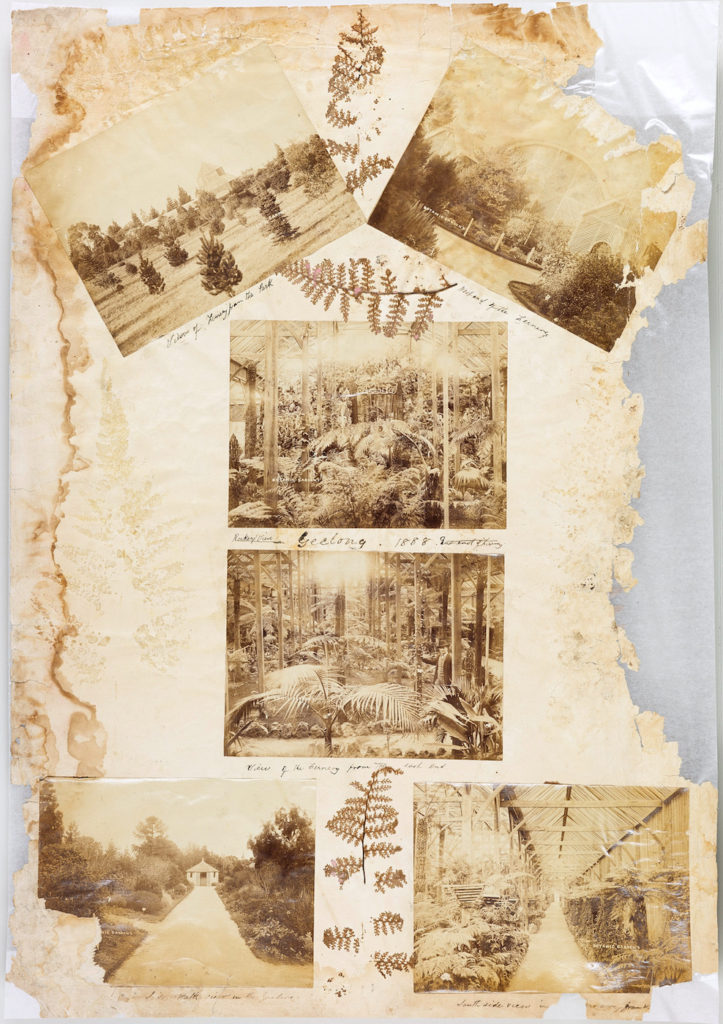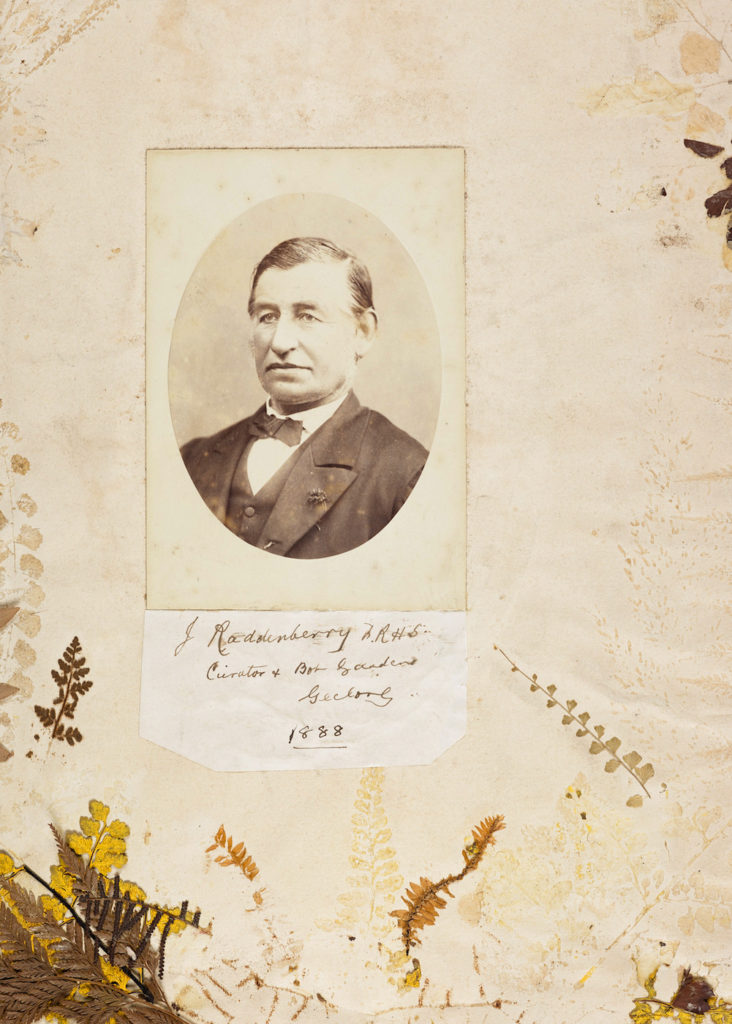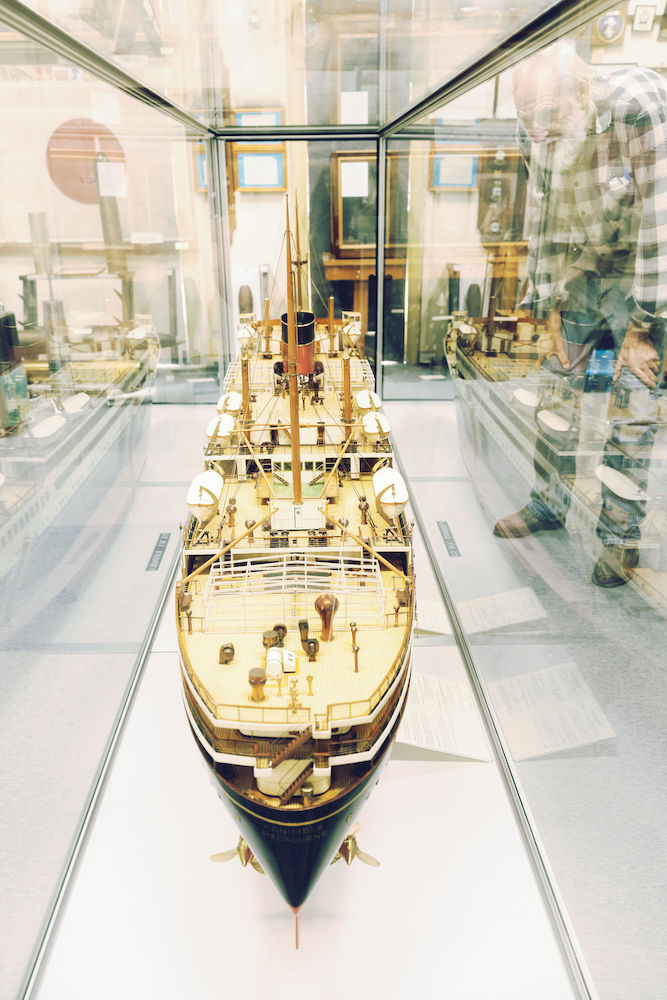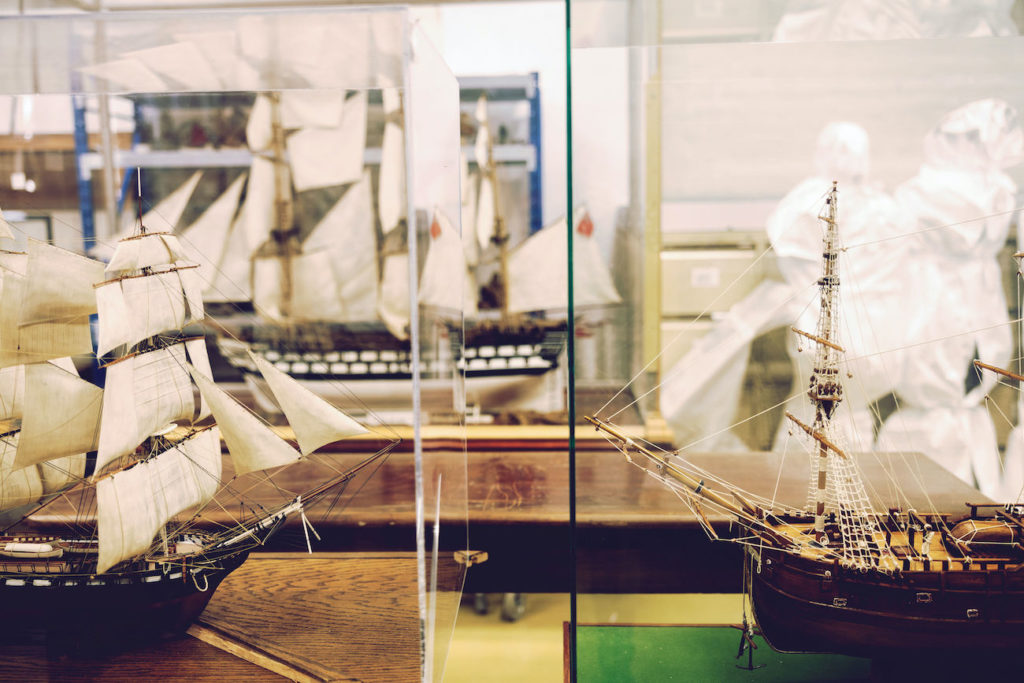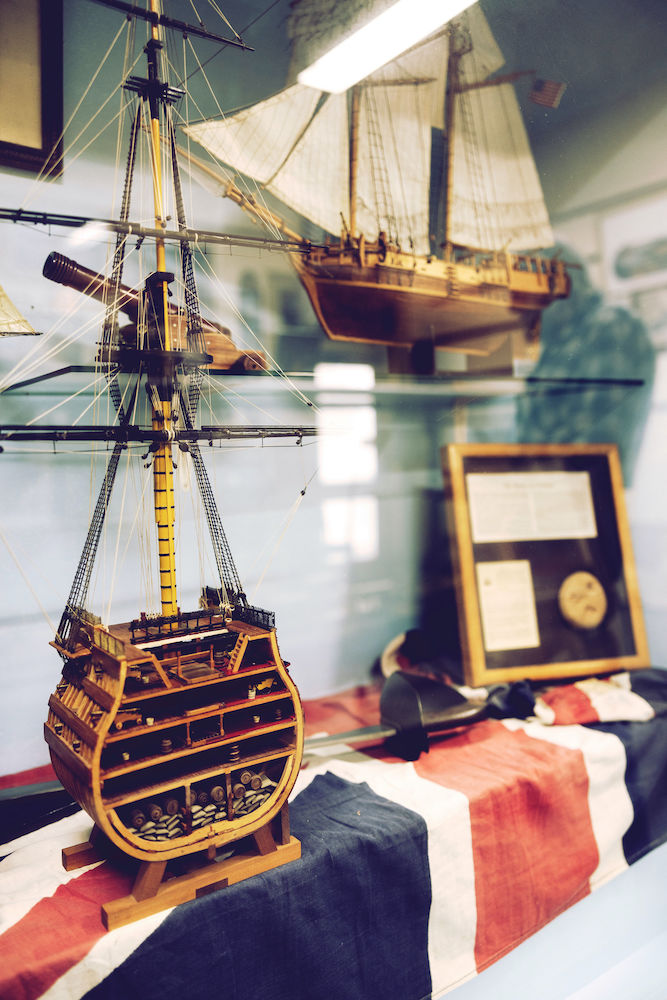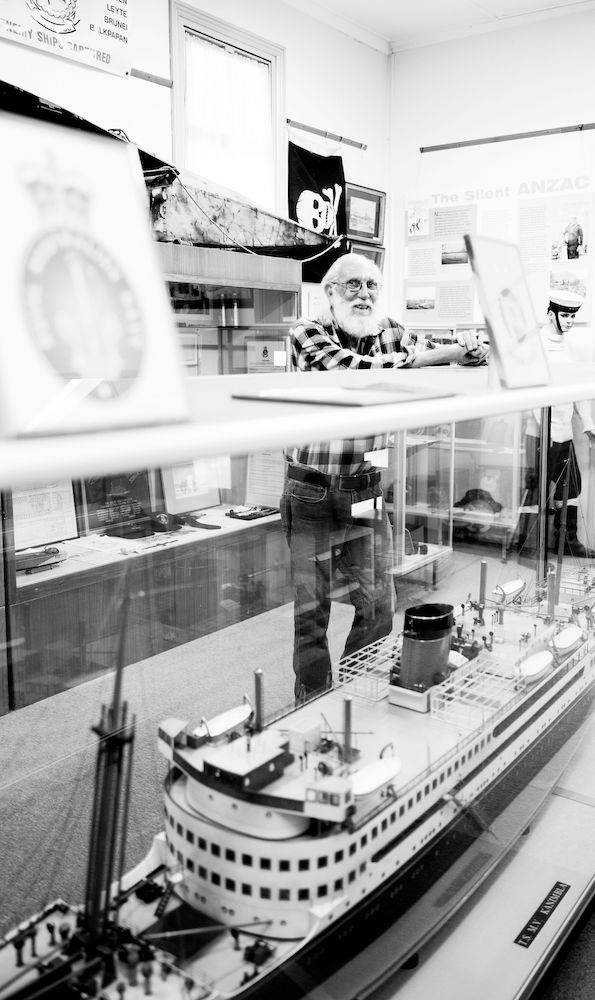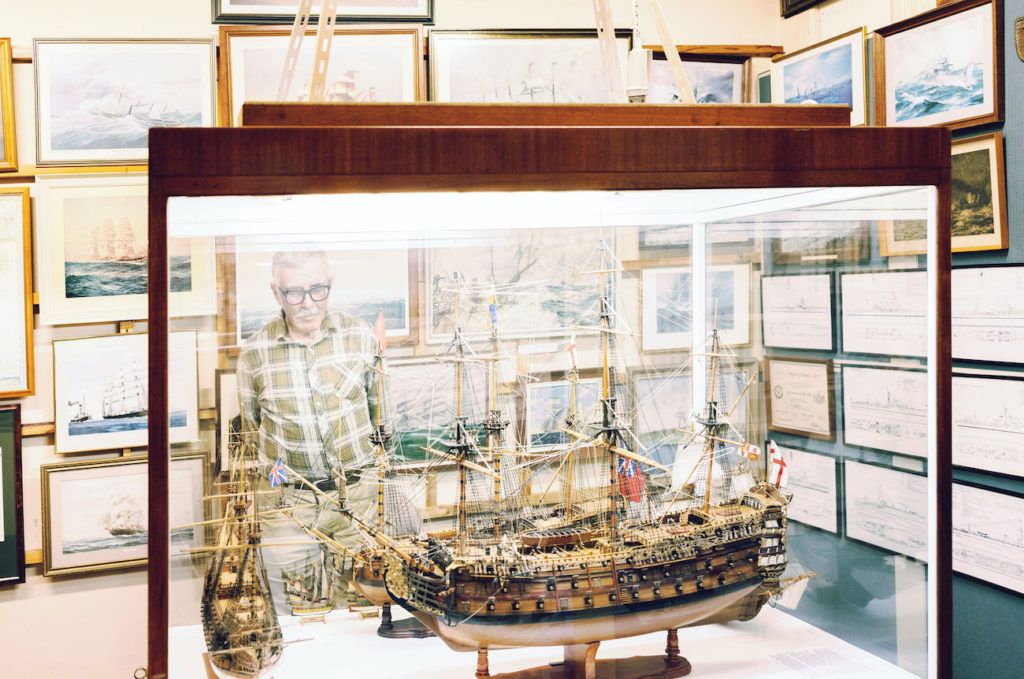In the late 1990s local council amalgamations formed what is now the City of Greater Geelong. It was created from the former Bellarine Rural City Council, Corio Shire Council, Geelong City Council, Geelong West City Council, Newtown City Council and South Barwon City Council. Working in these councils not only involved everyday municipal business but also a lot of celebrations and many openings.
For that a mayor or councillor needed everything from chains and hats and to shovels and robes. There was also a lot of hard work and industry that created this thriving and vibrant city region. The collection encompasses municipal business and memorabilia along with the major maritime and wool industries that led to the city’s prominence.
Concrete Trough for Animals
George and Annis Bills were philanthropists with a love of animals. They established a trust for the protection and alleviation of suffering to animals which furnished over 500 public horse troughs between 1924 and 1945 — three which remain within the Greater Geelong area.
Most troughs were installed in Australia; over 300 remain. Troughs were also installed in England, Ireland, North America, South Africa, Japan and Switzerland. Each trough cost £13 (just over $1000 today) to fabricate and install in the 1930s. From the 1880s to 1900s, George and his brother Henry ran successful businesses importing and selling birds, and manufacturing mattresses and sofas. George and Annis were keen supporters of the Society for the Prevention of Cruelty to Animals; George later becoming a Life Governor of the RSPCA. Annis and George built the first troughs in 1908. Annis died soon after, and George set up a trust to: ‘construct and erect and pay for horse troughs wherever they may be . . . desirable for the relief of horses and other dumb animals either in Australasia, in the British Islands or in any other part of the world’.
To honour his wife and country, each trough was to be labelled ‘Annis and George Bills Australia’. Following George’s death in 1927, the trust was administered by his sister Daisy Cook. Initially the troughs were individually designed and constructed. Then in the early 1930s Jack Phillips, a relative of the Bills, produced 250 precast concrete troughs to a standard design at his Hawthorn factory. Rocla pipes took over production in the late 1930s, which discontinued around 1945. The Bills’ Trust shifted its focus, helping to finance the RSPCA Tally Ho Animal Rest Home and the George Bills RSPCA Rescue Centre during the 1960s.
Stained Glass Window
This stained glass was originally installed at Geelong Town Hall following its expansion in 1917. The Geelong Council involved the staff and former students of the Gordon Technical College in designing the artwork and aesthetic of the building. Arthur S. Pittock, former student and local glazier, was responsible for the design and construction of the large stained glass window in the stair hall. The window was described as “a special feature” in the new building with the leaded glass work using “the motif throughout in Greek form, of admirable colour”. The window showcases the City of Geelong’s original coat of arms, featuring images of Geelong’s early industries: sailing, wool, wine and wheat production, and a kangaroo as an inescutcheon.
During the redevelopment of City Hall in the late 1960s the stained glass window was removed from the building and placed in the basement carpark. The National Wool Museum has taken responsibility of the window and removed it from the carpark to be conserved and housed safely.
The surviving City Hall window is the most elaborate, known surviving stained glass window by Pittock.
Watch the full story of the Stained Glass Window at https://vimeo.com/466047641
Town Clerk Chest
Painted black enamel metal chest, thought to be the original lock box used by William Weire, the first Town Clerk of Geelong. It was used to store important documents such as early leases and agreements.
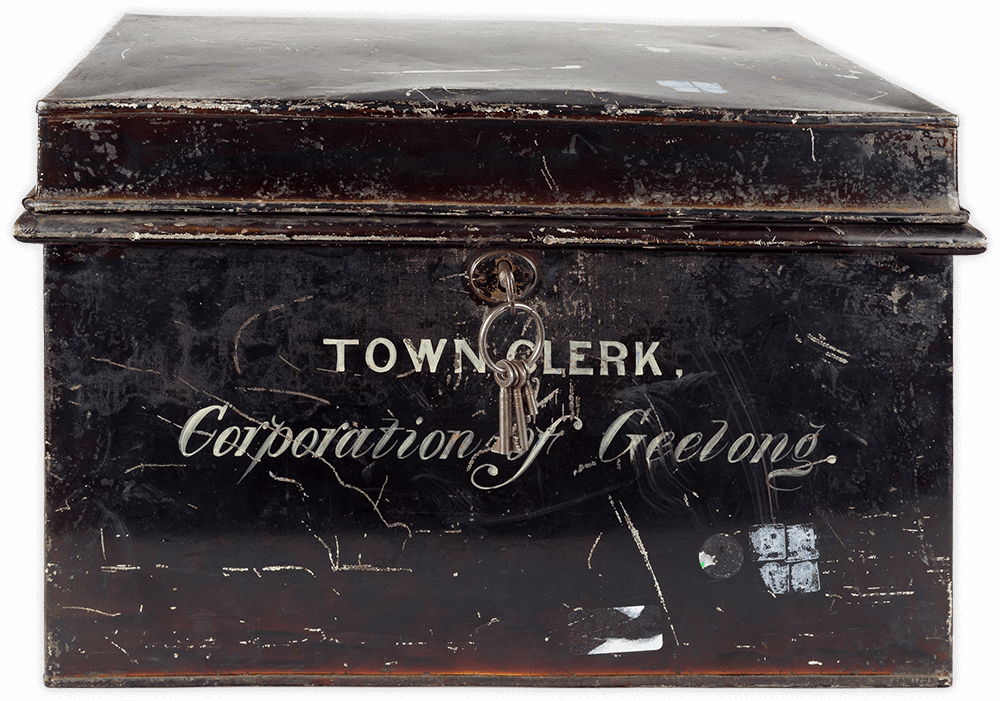
Clock of the Edina
The SS Edina was one of the longest running steam vessels anywhere in the world. Built in 1853, it was used in the Mediterranean during the Crimean War, carried cotton for the Confederate states during the American Civil War and ended its days on Port Phillip Bay, over a century later, making the trip between Geelong and Melbourne. It was only recently relocated during the work for the Our Heritage, Our Collection project.
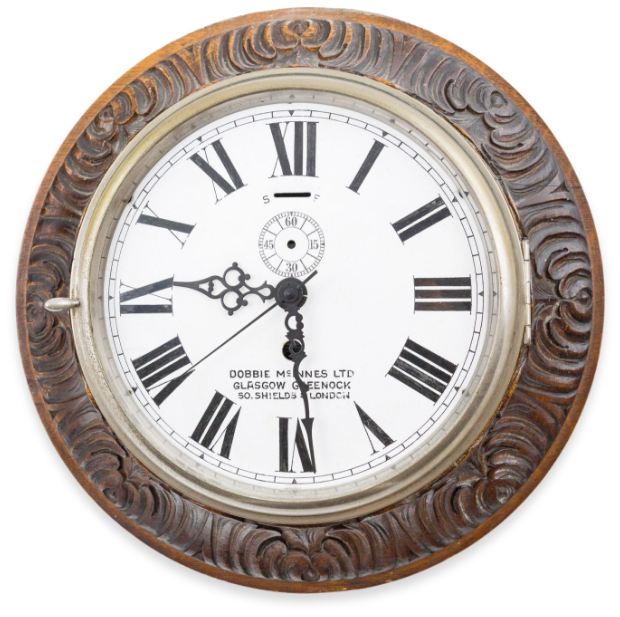
Ceremonial Spade
Engraved and presented to CF Belcher, Mayor of Geelong. Used for turning the first sod of the Geelong and Colac Railway, 23 October 1874.
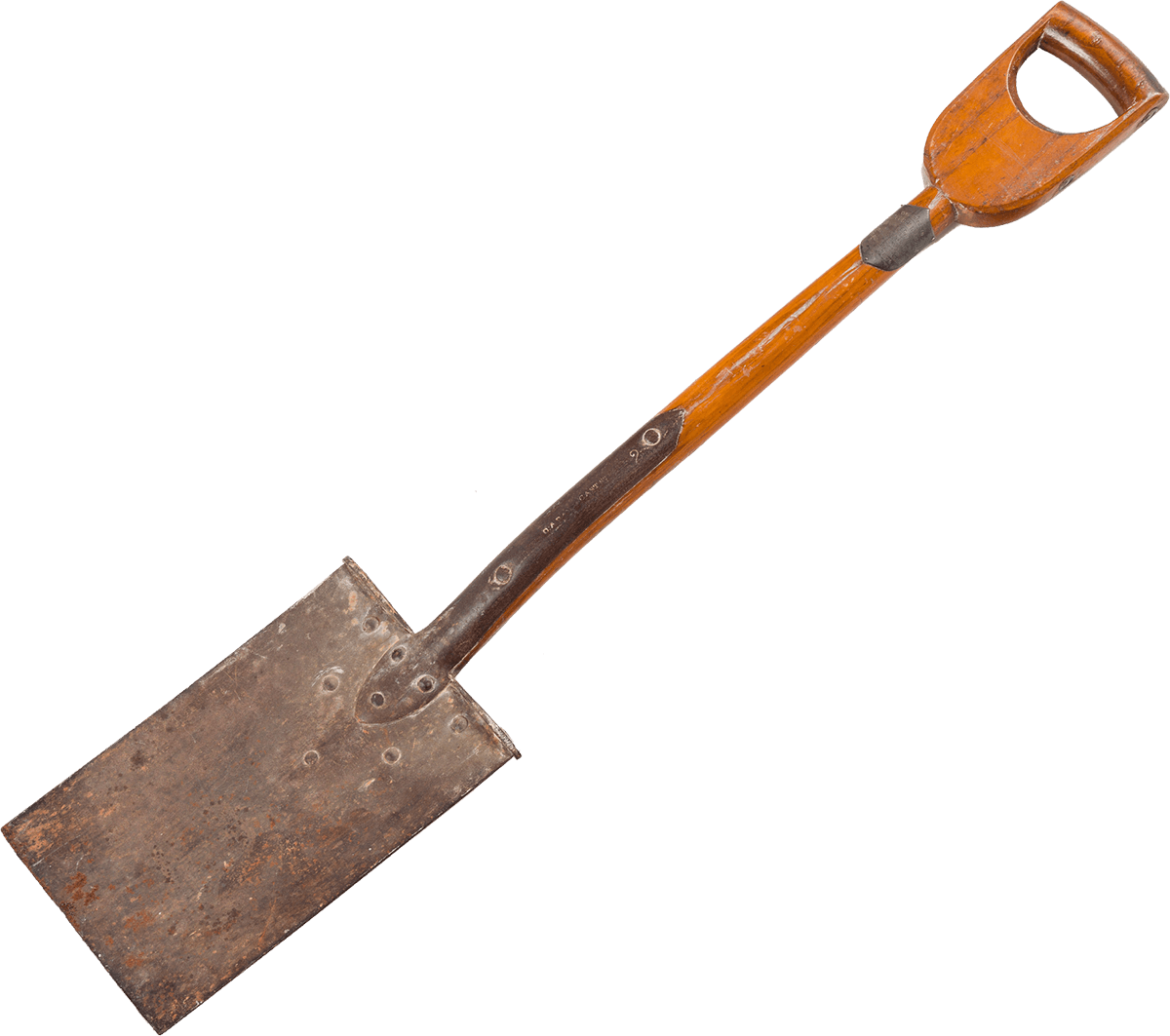
Mayorial Hat
Tricorn ornately styled and finished in black velvet with woven details and ostrich feathers. Formal clothing was regular practice by mayor and councillors for many events throughout the municipality. Such formalities continued for over a century.
Geelong Council Mayorial Chair
Ornate timber ceremonial chair featuring a carving of the Geelong coat of arms c1860. Until recently the chair was in the foyer of City Hall, it is now held in safe keeping at the Geelong Heritage Centre.
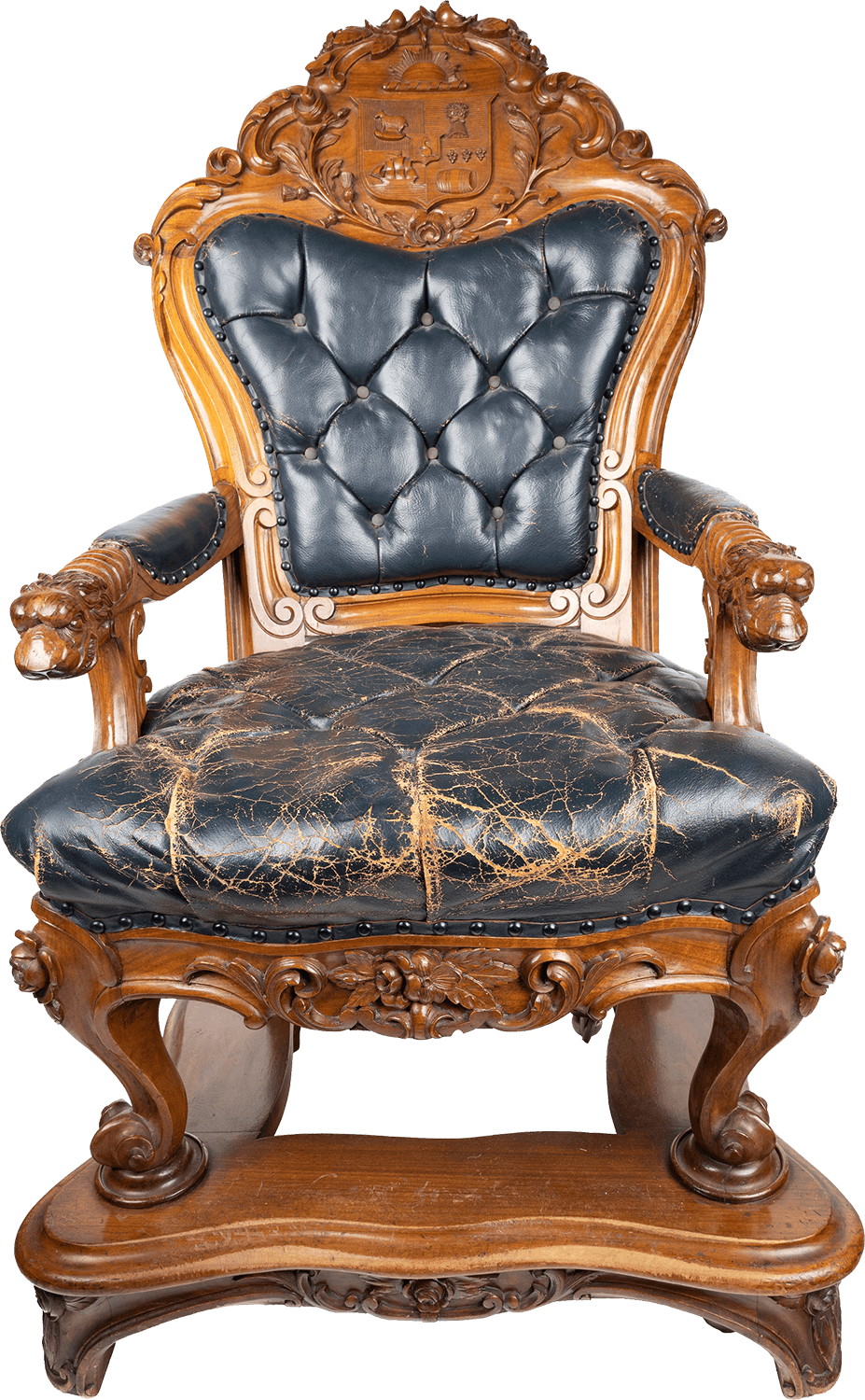
On the Edge of Town
This story details the life of Uncle David Tournier and growing up on the edges of Geelong in the 1960s. A Wadawurrung elder, Tournier made a significant contribution to the Geelong community. Film by Malcolm McKinnon.
Fern & Lycopods Album
This album was compiled from 1872 to 1896 by John Raddenberry, the second curator of the Geelong Botanic Gardens. This 235-page volume contains an impressive collection of pressed fern (botanical) specimens from across the world. Raddenberry was heavily involved in the emerging horticulture scene in Victoria and the book is symbolic of this new pastime and the fern craze that gripped the State. Photos courtesy of Geelong Heritage Centre.
Geelong Mayorial Robes
These robes are thought to be the original ones purchased by Geelong Town Mayor Robert de Bruce Johnstone as he was preparing to receive Prince Alfred, Duke of Edinburgh, during his visit to Geelong in 1867. Formal dress by the mayor was regular practice for nearly a century.
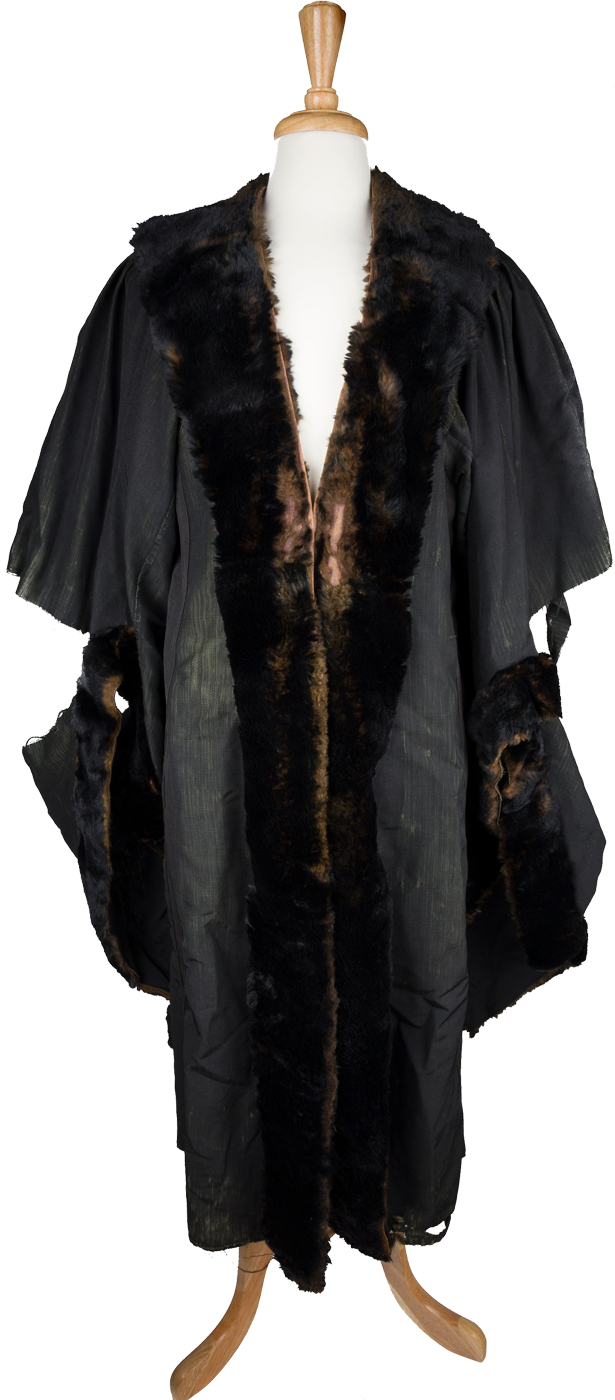
Ceremonial Trowel
This trowel was presented to the Corporation of Geelong by Joseph Reed architect and Builders William Allen &William Cakebread on the occasion of the laying of the foundation stone of Geelong Town Hall on 9 April 1855. It was presented to William Kingston Baylie, Mayor of Geelong.
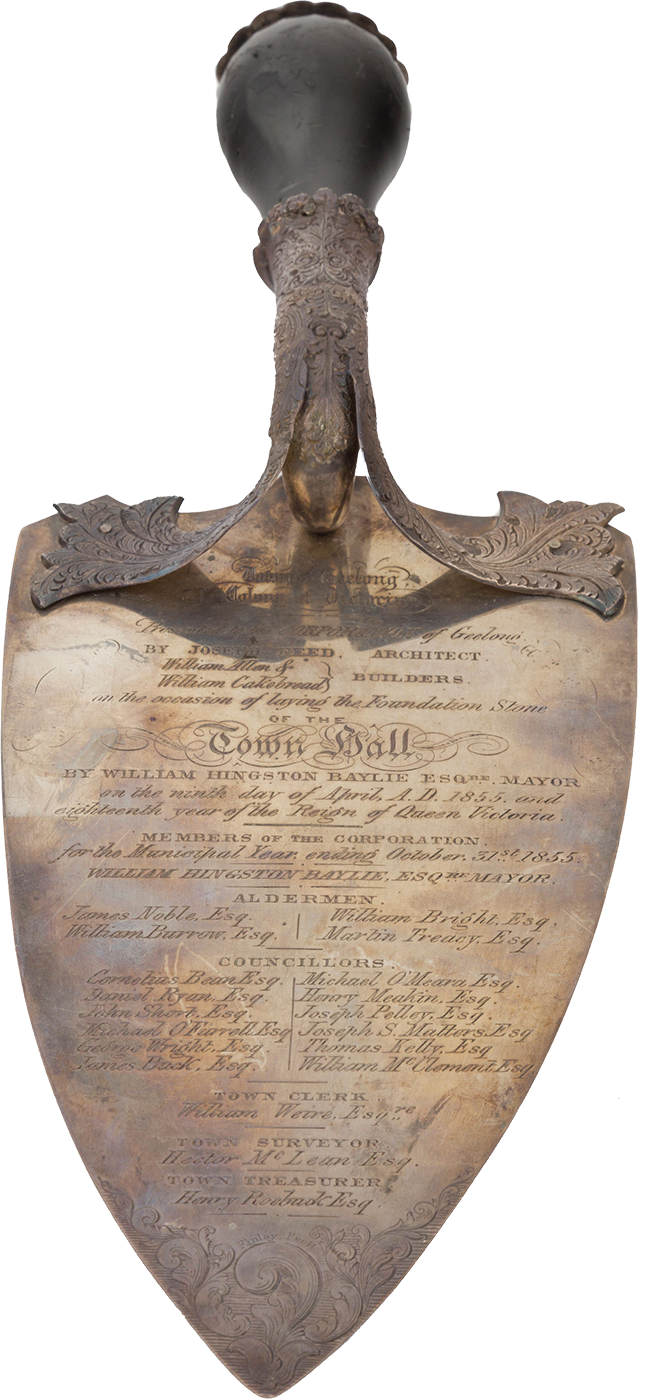
View of City Hall
Originally constructed in 1855, based on plans by architect Joseph Reed, the building remained with only a single southern wing until the turn of the century. In 1914 a referendum was held to decide whether to move town hall to another site on Moorabool Street (the former Geelong Grammar site). This was defeated. By 1917 the eastern and northern wings of the building were completed. This image was taken soon after the completion of the building.

Boat Winch, Western Beach
The Geelong Harbour Trust leased the Western Beach sites to various boat-building and servicing companies, such as Higgs Brothers, Charlie Blunt’s Boatbuilders and Barrow’s Boatyard. Slipways were installed to winch boats up from the water for maintenance and repair works. The fishing boats currently on the winches were built by master shipwrights at Western Beach. Many boats were crafted in the area from the 1920’s as Western Beach became Geelong’s chief maritime focus.
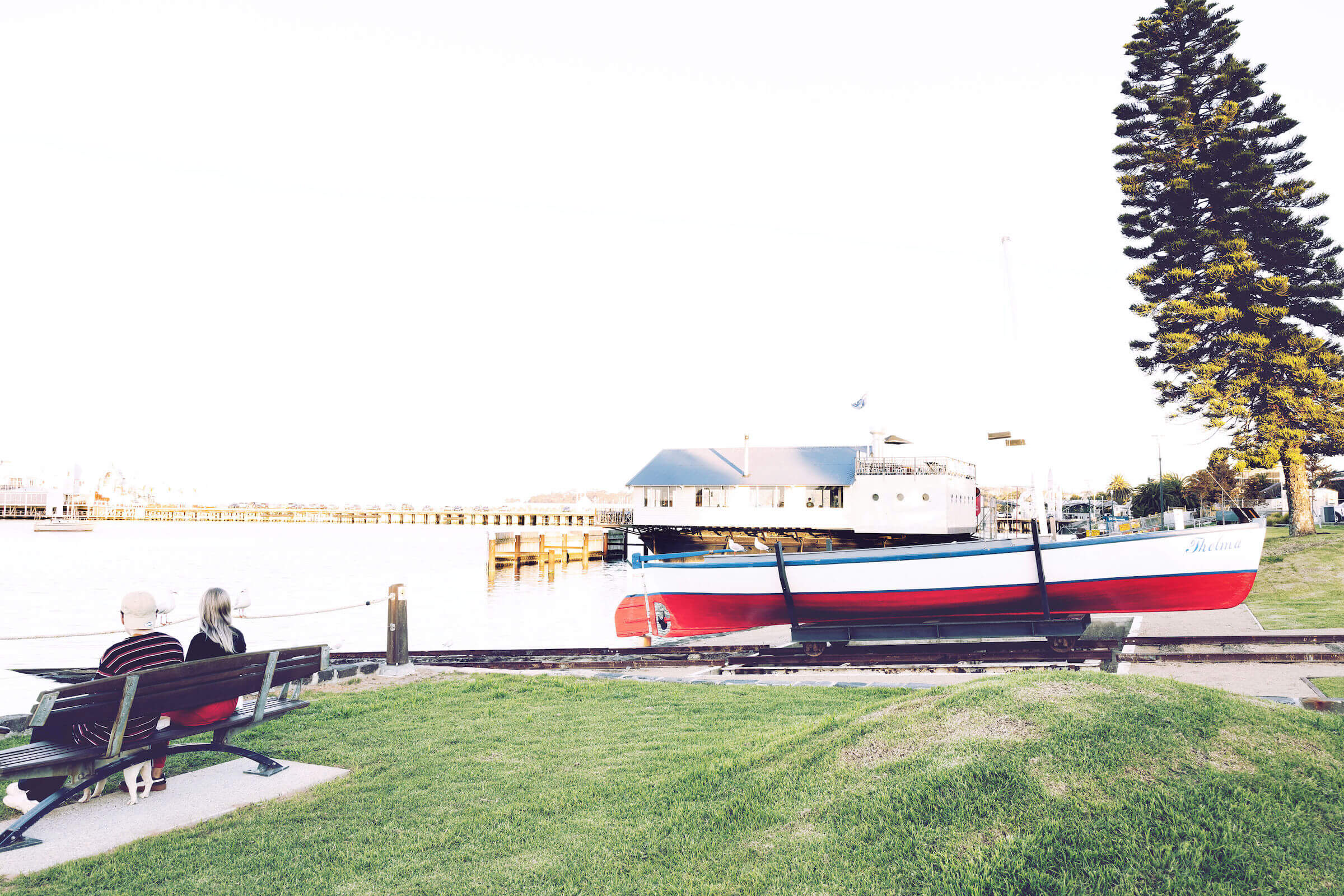
Gin Still, North Geelong
This Gin Still showcases the large distilling history within Geelong. Geelong once housed the largest whisky distillery in the southern hemisphere, The Corio Distillery. Built in 1928 and closed in 1989, the venture cost Scottish and Australian firms £200,000 (about $15 million at today’s prices) to pipe water from the Upper Barwon river to the distillery site. Today Geelong still produces a large amount of spirits.
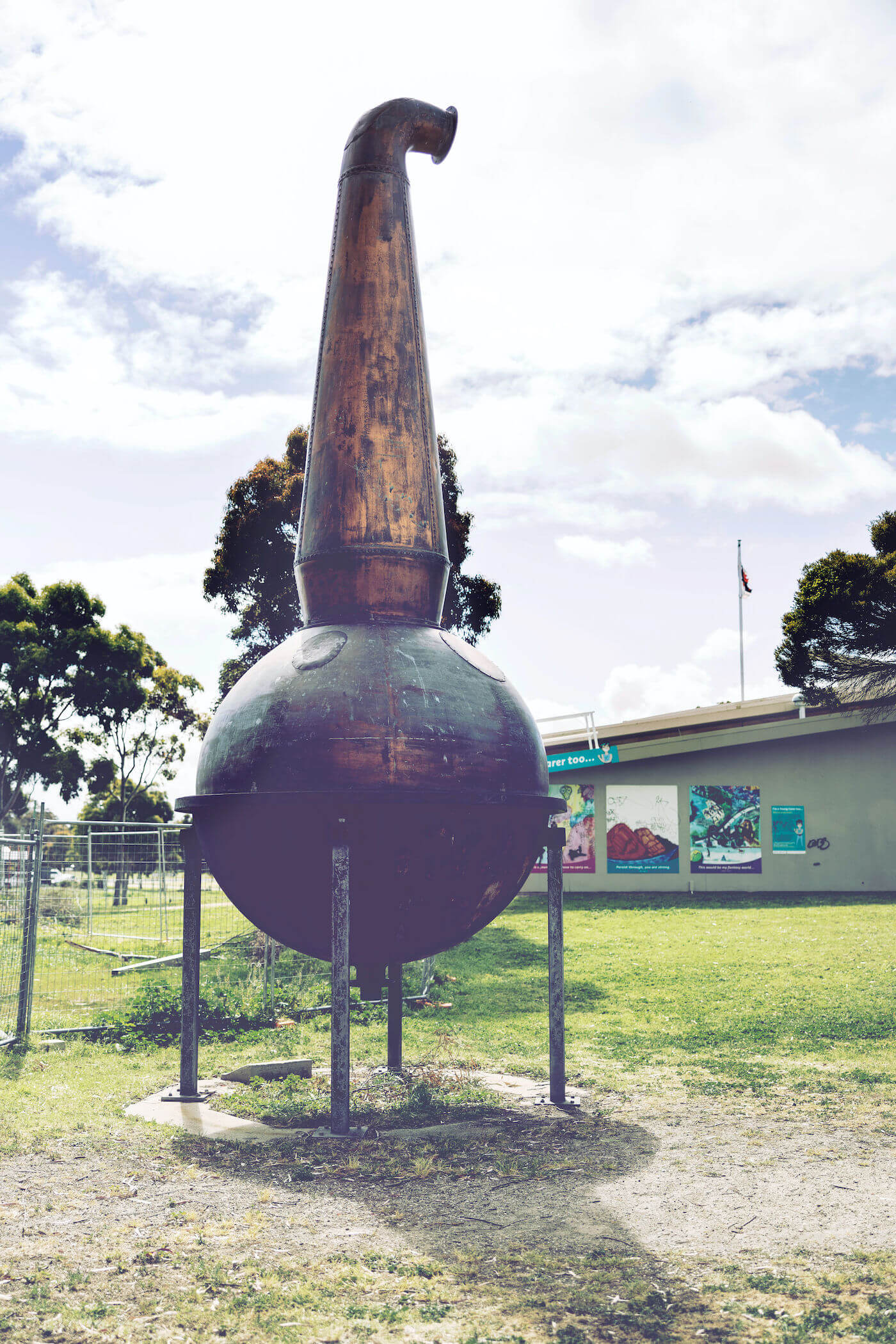
Model Boat Collection
The Geelong Naval and Maritime Museum holds a significant collection of model boats, including a recently acquired model of the Edina. The GMM collection is partly owned by Geelong City Council, the collection holds items of local, state and national significance. The collection tells important maritime stories, including from the development of the port of Geelong to the development of maritime technology from the mid-19th century, the museum fills a role in educating and giving a sense of pride to the people of Geelong and those visiting the city from abroad.
Rope Board
This rope board is part of the Geelong Maritime Museum collection, a portion of which is owned by the City. Geelong has a rich maritime and cordage industry history. The Geelong Maritime Museum holds items of local, state and national significance.
